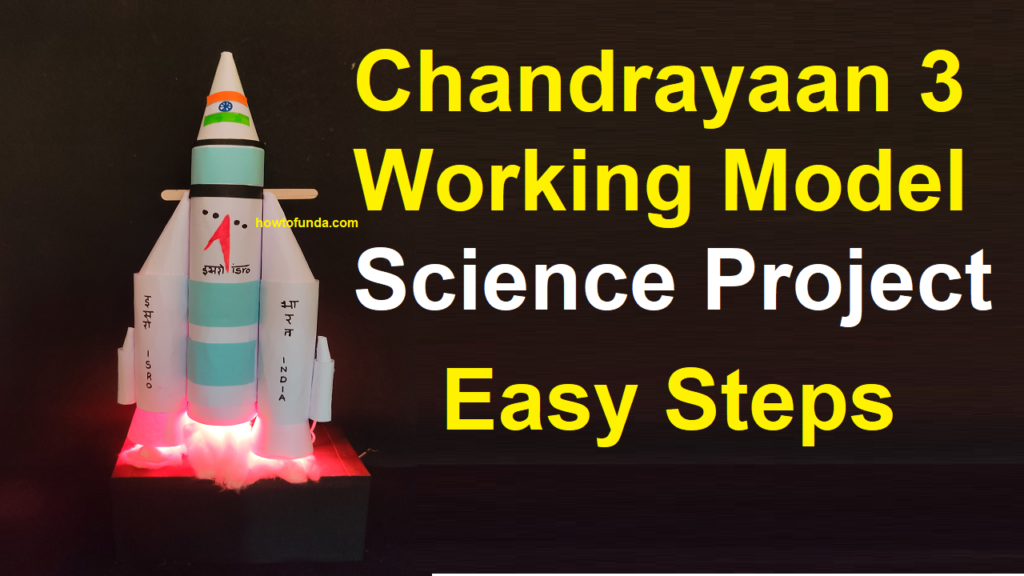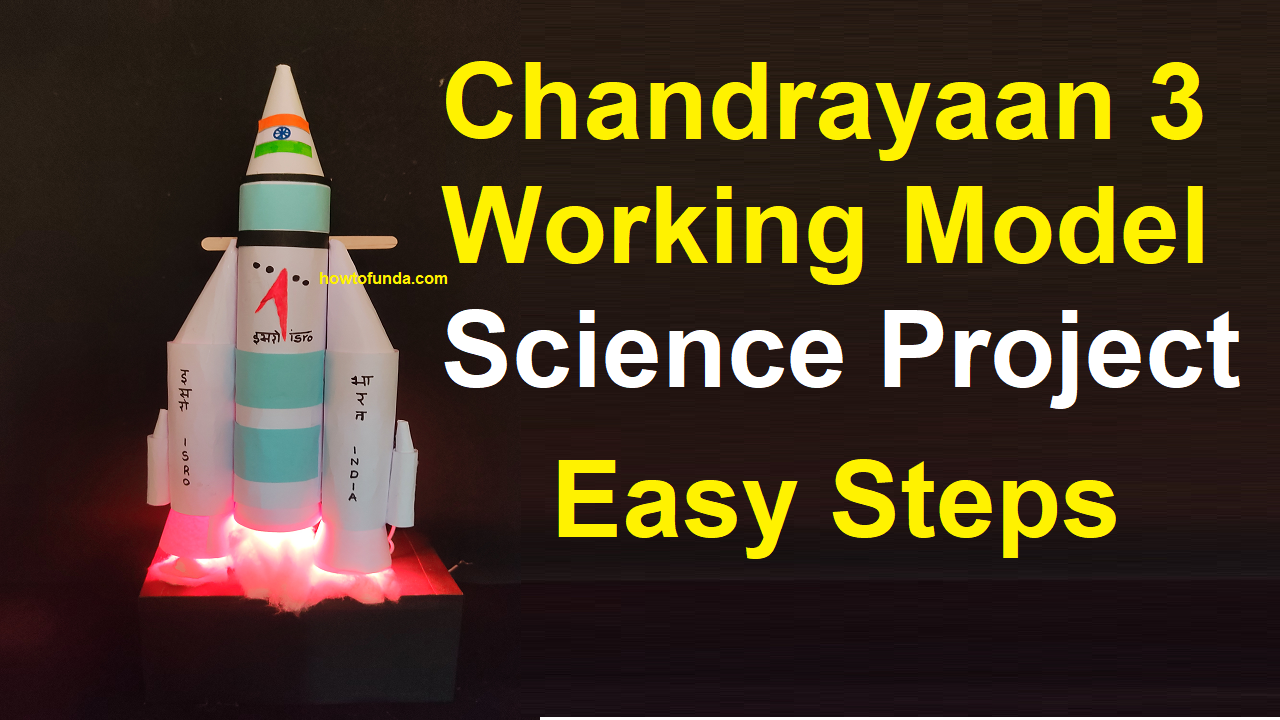Chandrayaan-3 is India’s third lunar mission, launched by the Indian Space Research Organisation (ISRO) with the goal of achieving a soft landing on the Moon and exploring its surface. A working model of Chandrayaan-3 for a science exhibition would demonstrate the key components and working principles of this mission.

Components:
Lander (Vikram): The lander carries the rover to the Moon’s surface. It is designed to land gently and safely on the lunar surface, equipped with sensors to navigate and avoid obstacles.
Rover (Pragyan): The rover is a small, wheeled vehicle that operates autonomously once it lands. It explores the lunar surface, conducts experiments, and sends data back to Earth.
Propulsion Module: This module provides the necessary thrust to carry the lander and rover to the Moon. It helps in orbiting the Moon before the lander descends for a soft landing.
Solar Panels: The lander and rover are powered by solar energy, with solar panels designed to recharge their batteries.
Working Principle:
The working model can showcase the stages of Chandrayaan-3’s mission:
- Launch and Orbiting: The propulsion module, in the model, can show how the spacecraft enters lunar orbit and prepares for landing. It can be represented with a rotating mechanism to simulate movement in space.
- Landing: The Vikram lander’s descent can be demonstrated by simulating a controlled, slow landing using a soft-landing mechanism, using springs or a shock absorber system.
- Rover Deployment: After landing, the rover (Pragyan) is deployed from the lander. In the model, a small mechanism can simulate the rover’s movement on the lunar surface.
- Data Transmission: The rover sends data back to Earth. A simulated communication system can display how the rover sends scientific data, such as lunar soil analysis, to scientists.
This model would effectively highlight how ISRO’s Chandrayaan-3 mission is designed to explore the Moon’s surface, contributing to scientific understanding of the Moon.

